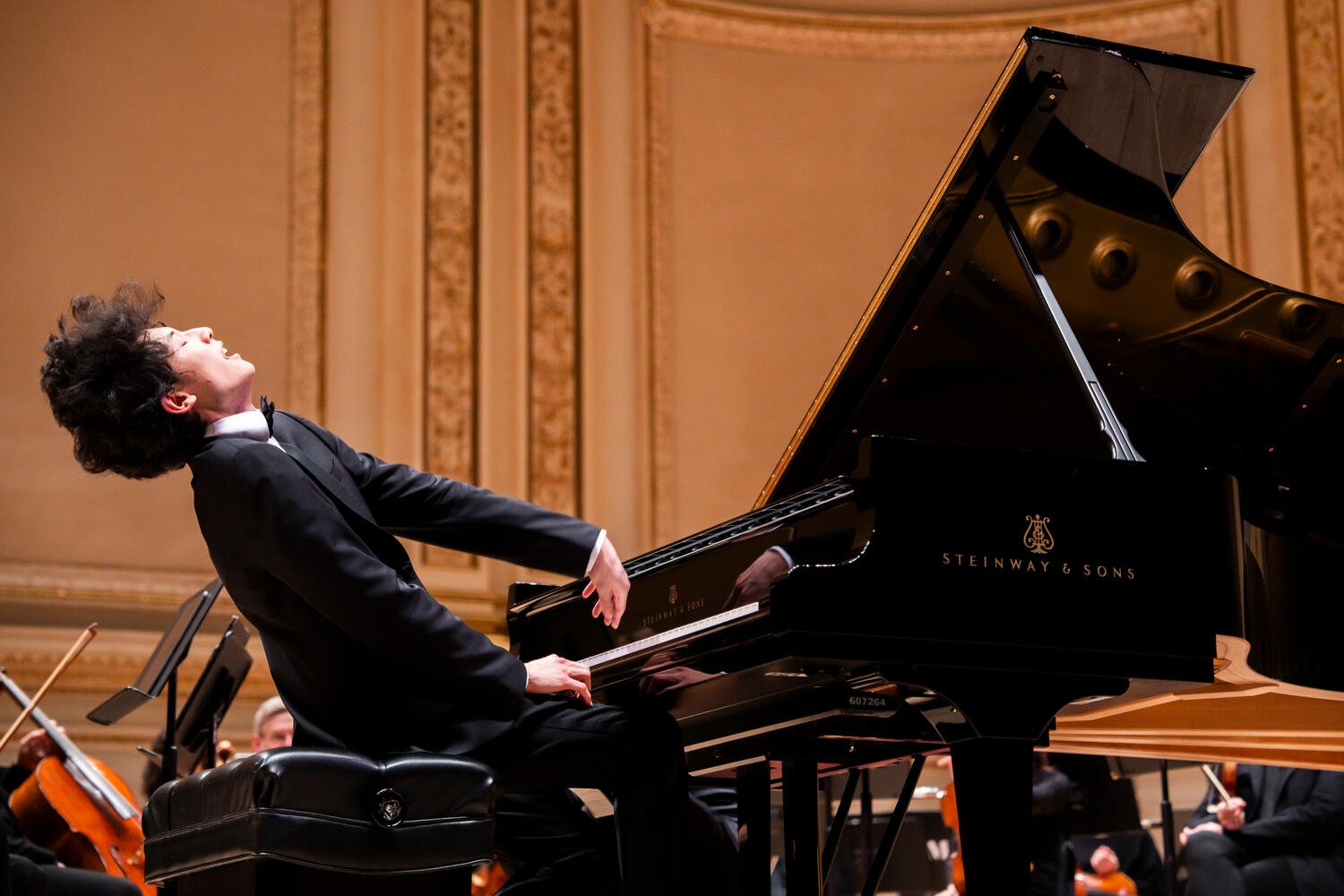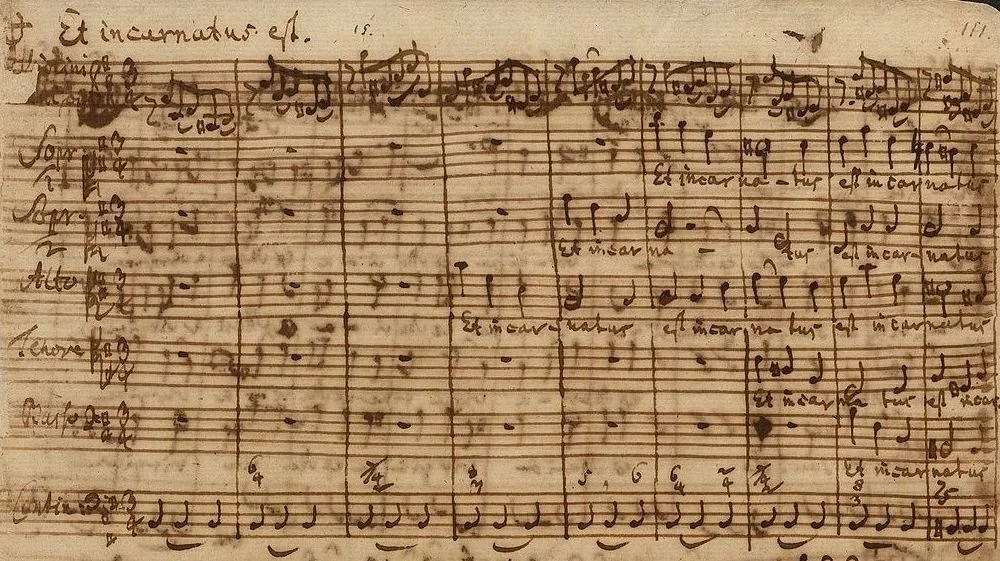REVIEW: Nézet-Séguin Brings His Hometown Orchestra to Carnegie Hall
Above, Yannick Nézet-Séguin. Photo by Chris Lee.
March 6, 2024
New York City and Montréal communed in midtown Manhattan on Wednesday night when Orchestre Métropolitain de Montréal concluded their second US tour, under the baton of their maestro of 25 years, Yannick Nézet-Séguin. C'était magnifique.
The evening began with a new work, relevant to current events. Nézet-Séguin, in introductory remarks, recalled last summer’s Canadian wildfires and those infamous orange skies. Canadian Cree composer and cellist Cris Derksen’s tone poem Controlled Burn is inspired by the traditional indigenous practice of managing forest fires. Derkson played solo electric cello in this sonic drama accompanied by large orchestra, recorded sound design, and electronic effects.
Mournful, meditative chord sequences that build to militaristic drumming straight out of a Hans Zimmer film score are marked by imaginative string writing. Derksen plays the cello soulfully, and her climb to the highest register peaked with soaring swoops like calling seagulls — perhaps symbolizing firefighting aircraft dropping water bombs. This moody piece brought the aesthetic of the Paul Winter Consort’s nature-inspired Solstice concerts to Carnegie Hall.
Cris Derksen, Yannick Nézet-Séguin and Orchestre Métropolitain de Montréal. Photo by Chris Lee.
From the first resonant chords of Sergei Rachmaninoff’s Piano Concerto No. 2 in C Minor, Op. 18, soloist Tony Siqi Yun, in an impressive Carnegie Hall debut, established himself as a first-rate talent. He shaped every phrase with a sculpted, directional sense of line. A milky, arioso tone and nimble, electrified arpeggios dripped from his arms, infused with character, whether Rachmaninoff indicated con passione or espressivo.
Few piano concertos entwine soloist and orchestra so closely; Nézet-Séguin and Yun shared sweeping melodic hooks, and long dramatic arcs, effortlessly in step. The orchestra and pianist fed off each other’s energy in symbiosis, giving the concerto the feel of chamber music. Following a spectacular encore, Yun launched the orchestra into an impromptu “Happy Birthday” in honor of Yannick’s 49th.
Tony Siqi Yun plays Rachmaninoff’s Second Piano Concerto at Carnegie Hall. Photo by Chris Lee.
Yannick Nézet-Séguin, soloist Tony Siqi Yun, and Orchestre Métropolitain de Montréal. Photo by Chris Lee.
L’Orchestre Métropolitain? World class. Nézet-Séguin is one of Carnegie Hall’s “regulars,” appearing frequently with The Philadelphia Orchestra and the Metropolitan Opera Orchestra. But this is the band that put him on the map. How lucky are Montrealers — it’s a fantastic ensemble, with a personality quite distinct from Philly or the Met.
They brought just enough acid and heat to the unctuousness of Rachmaninoff’s C Minor Concerto, but they really got to strut their stuff, and enjoy the auditorium’s revered acoustics, in the program’s second half: Jean Sibelius’s Symphony No. 2 in D Major, Op. 43 .
Yannick Nézet-Séguin and Orchestre Métropolitain de Montréal. Photo by Chris Lee.
The placement of the basses — seated in the rear of the orchestra, rather than the usual stage-left — must contribute to the orchestra’s plush, beefy sound. The woodwinds have a warm, well-rounded color, yet rhythmic and edgy details sparkle, as in the epic landscape of the symphony’s first movement, Allegretto. Nézet-Séguin drew intense expression from the strings — leaning in, as if mind-melding with the players. The group navigated Sibelius’s hills and valleys with panache, each mountaintop a well-earned climb, as in the heraldic return of the second theme, which felt like a wail of despair, or a battle cry.
The mysterious, lumbering bass and celli pizzicato that begins the second movement, Tempo andante, ma rubato, was limber, but tight, giving rise to a mythic, shape-shifting slow movement with beautifully tuned choirs of winds. The scherzo was indeed Vivacissimo, crisp and fleet, but running headlong into dangerous clouds. The contrasting Lento e suave passages revealed a wind-blown haze under a haunting, sinuous oboe solo, kept the suspense afloat, before a rafter-shaking crescendo arriving at the rousing, boundless Finale: Allegro moderato, which levitated on the wings of thrillingly virtuosic timpani playing.
The piece’s final plagal cadence had the impact of an organ with all the stops pulled out, and Nézet-Séguin wisely suggested a “nightcap:” Edvard Grieg’s To Spring arranged for strings. Breezy and hopeful, it was the right choice, sending the festive audience into the rainy evening with optimism.
Photo by Chris Lee.










